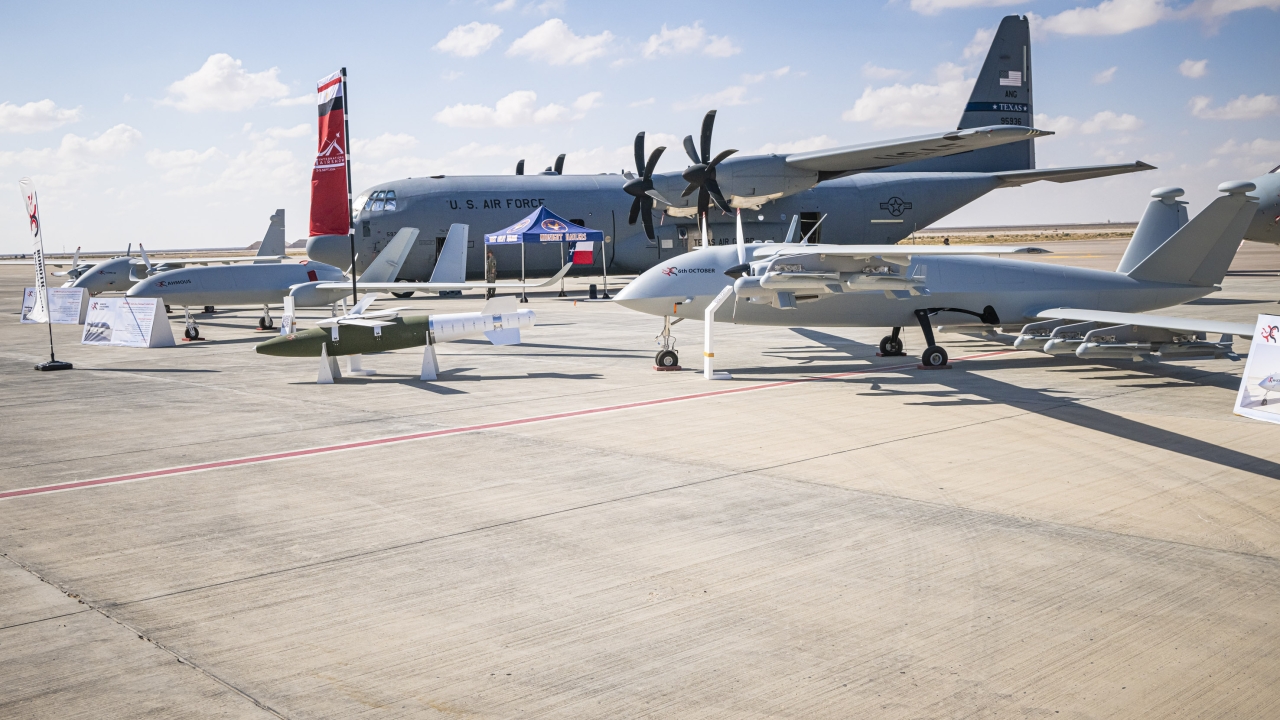Egypt Airshow: Flight dates for ambitious Egyptian drones
Three unmanned aerial systems parked in the show’s static display perhaps fooled people to think at least two of them were from Turkey’s Baykar.

Image: BillyPix
But infact they were Egyptian - designed and developed by Robotic Engineering System.
The E-June 30 medium altitude long endurance (MALE) UAS looks similar to the Baykar Akinci. It has been serving the Egyptian Air Force for around four to five years, accumulating 2,500 hours of flying time during that time. According to the specification sheet the E-June 30 fulfils the intelligence surveillance reconnaissance role, through a switchable EO/IR/LRF FLIR (Forward Looking Infra Red) turret or synthetic aperture radar.
With a mean take-off weight of 1,680kgs and a 12.4 metre wingspan, the E-June30 powered by a pair of gasoline 115hp engines can stay airborne for up to 14 hours. It has a maximum speed of 260km per hour and can operate between 18,000-20,000ft.
Parked next to it is the Ahmous, not dissimilar to the Bayraktar TB-2. Design and development started in 2019 with ground testing almost complete which should lead to flight tests in 2025. Again, it will be ISR configured, and with a MTOW of 1,200kg can utilises a switchable EO/IR/LRF FLIR or SAR. With a wingspan 18m, and a single 145hp gasoline engine It has the ability to reach an operational ceiling of 23,000 feet according to the spec sheet and reach a maximum speed of 250km/hour.
Finally, there is the audacious looking 6th October, a MALE UAS still under development, with 16 hard points. First flight is expected in 2025. According to a source “This is a fresh design and is essentially an upgrade on the E-June 30, with a MTOW of 2300 kgs. The 16 hardpoints – four on the front wing and six on the rear can carry a payload of up to 1,000kgs.
Design and development were completed in June. The weapon in front of the display article is the company’s 1,000kg GWD-6, which can house the explosives of the customer’s requirements.
The October 6 should fly up to 23,000ft courtesy of two 145hp gasoline powerplants and a 118 m wingspan, reaching a speed of 260 km/hr and the ability to stay airborne for 30 hours. The two ‘blocks’ at the top of the two vertical tales are directional antennas for beyond the line of sight (BLOS) ops.
Stay up to date
Subscribe to the free Times Aerospace newsletter and receive the latest content every week. We'll never share your email address.

